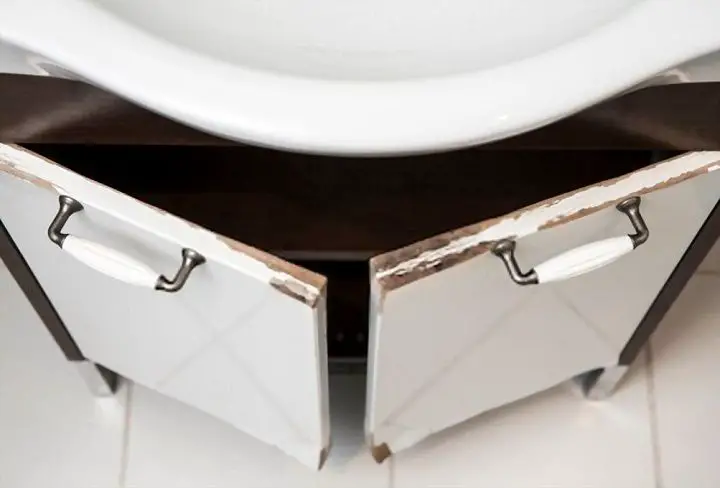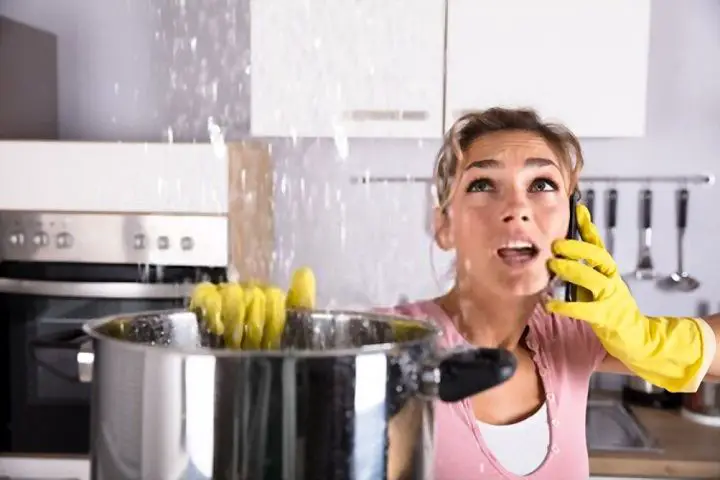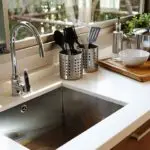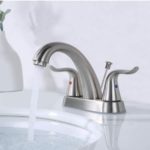Cabinets, particularly under kitchen and bathroom sinks, are more prone to water splash. Thus, water damage under kitchen cabinets will cause havoc to the cabinets. The damage will not only destroy the exterior finishing but also will cause structural damage to the cabinet.
This will significantly reduce the usefulness and durability of the cabinet. Hence, it is essential that you know how to repair water-damaged kitchen cabinets to keep them functional and performing. Although you will find many articles on the same topic, not all of them are handy. Some are even way too complex for understanding.
So, we decided to pile up a comprehensive guideline on the repairing of the water-damaged kitchen and particle board cabinets.
So, let’s see.
An Effective Way to Repair Water Damaged Kitchen Cabinet
When we talk about improving the kitchen cabinet due to water damage, we primarily focus on structural and cosmetics defects. We can solve them with simple DIY projects. However, if the furniture faces severe de-lamination or warping, you may need to replace the whole plywood.
As on to now, let’s see how to fix the minor damages.
Understanding the Depth of Damage
It is always wise to measure the damage level so that you can know how much time and effort you would require to repair the cabinet. It will also help you to take proper mental preparation.
If the water damage has happened due to a sudden water burst and you are quick to respond, the chances are that you will only need to refurbish the paint. If the cabinet has faced sustainable water damage, you will need to repair it with persistence.
So, get ready to invest a few minutes in the cabinet.
Structural Damage Repairing
Once you are confirmed about the damage level and from where the water is leaking to damage the cabinet, first take away the water source. Now, let the cabinet dry out to soak the excess water. It will make your work much more comfortable.
Now follow the steps to repair the damage.
- Use carpenter glue to spread it over the damaged plywood.
- Now, use a C-clamp to clamp the glue with a plywood board.
- If you find any inside braces got damaged, use glue and screws to repair them.
However, if the braces are too much damaged, think about replacing them with a new one.
Wipe Out the Blackening
Water damage often blackens the plywood. You will require to use oxalic acid to remove the black stains. But before you can apply the acid, you must sand the finishing to reach the raw plywood. Then make a solution of acid, crystal, and freshwater to use on the damaged area.
Use a brush to apply the solution mildly on the blackened area. Then, once you are satisfied with the improvement, apply a baking soda solution. This will neutralize the effect of the acid.
Lastly, after the wood has dried out, refinish the cabinet to give it optimal durability.
Nonetheless, if the damage is severe, you may need to replace some of the furniture parts.
How To Repair Water-Damaged Particle Board Cabinets

Reaping a water-damaged particle board cabinet needs some effort and care. The DIY project will save you from the cost of expensive replacement of the furniture parts or the whole furniture. So, please don’t ignore it.
- At first, use a hairdryer to dry the wet area. Alternatively, you may ignite the particleboard using a heat gun to raise the temperature.
- Once the particle has dried out thoroughly, take medium grit sandpaper and sand the damaged area. Do it gently. You can also use electric sandpaper to do the job.
- Clean the sand dust to find out the soft spots on the board. Use wood filler to strengthen the weak board.
- Then use waterproof glue on the area to make it watertight. This will protect them from further water damage.
- Lastly, sand the area once again to get an excellent finish.
Related Resources: How to Fix A Warped Cabinet Door
You should get a satisfactory repair.
Conclusion
Particleboard or cabinets are prone to water damage in the kitchen since they come in direct contact with water. So, it would help if you made sure that water doesn’t leak underneath the sink to damage the cabinet.
However, once you notice any damages, you must respond fast. Or else, you may need to go through costly replacement. Thankfully, the repairing of water-damaged cabinets and particleboard is pretty straightforward- given the fact you follow the steps mentioned above.
So, don’t get frustrated next time you see any damage.
-
Pingback: Can You Replace Kitchen Cabinets Without Replacing Countertop
-
Pingback: Can Laminate Flooring Be Installed In A Bathroom?



